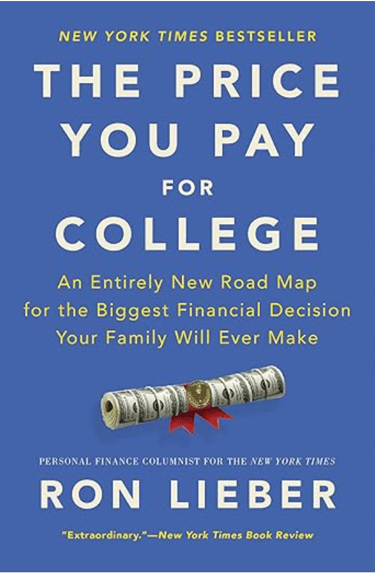Top 5 Takeaways : The Price You Pay for College
An Entirely New Road Map for the Biggest Financial Decision Your Family Will Ever Make
BOOK
1/29/20252 min read


"The Price You Pay for College" by Ron Lieber offers valuable insights into navigating the complex world of college financing. Here are five key takeaways:
Focus on Net Price, Not Sticker Price: The advertised tuition is rarely what families actually pay. Lieber emphasizes the importance of looking at the net price, which is the sticker price minus any grants, scholarships, and financial aid. This gives a more realistic picture of the true cost.
Don't Assume You Won't Qualify for Aid: Many families mistakenly believe they are ineligible for need-based aid. Lieber encourages everyone to fill out the FAFSA (Free Application for Federal Student Aid) to see what aid they might qualify for, regardless of income.
Merit Aid Can Be a Marketing Gimmick: While merit-based scholarships can be helpful, Lieber cautions against relying on them. He reveals how some colleges use merit aid to attract students and inflate their rankings, sometimes offering little to no actual financial benefit.
Balance College Costs with Other Financial Goals: Saving for college is important, but it shouldn't come at the expense of other crucial financial goals like retirement savings. Lieber advises families to find a balance and prioritize their overall financial health.
Consider Value Over Prestige: The most expensive college isn't necessarily the best. Lieber encourages families to consider the value of a degree in relation to its cost. He suggests researching potential career paths and earning potential to make informed decisions about college choices.
A key story that Ron Lieber shares in "The Price You Pay for College" is about a student named Sarah who had her heart set on attending a prestigious, out-of-state university. Her family, like many others, was drawn to the allure of the school's reputation and the perceived value of its name. However, when they received the financial aid package, they were shocked by the high cost, even after grants and scholarships.
Sarah's family had to make a difficult decision. They could either take on a significant amount of debt to afford her dream school, potentially jeopardizing their long-term financial stability, or they could encourage Sarah to consider other options that were more affordable.
This story illustrates a common dilemma faced by many families. The desire for a prestigious college education can be strong, but it's crucial to weigh that desire against the financial realities. Lieber uses Sarah's story to highlight the importance of:
Calculating the true cost: Don't just focus on the sticker price. Understand the net price after financial aid and consider the long-term implications of student loan debt.
Balancing prestige with value: A well-known college name doesn't guarantee success. Consider the value of the education in relation to its cost and explore other excellent, more affordable options.
Having open conversations: Talk honestly with your student about finances and the potential trade-offs between their dream school and your family's financial well-being.
Sarah's story serves as a cautionary tale, reminding families that college decisions should be based on a careful assessment of both educational fit and financial feasibility.
Disclaimer: This is a brief summary of key takeaways and a key story. It is intended to provide a general overview of the book's core concepts. For a comprehensive understanding of the author's philosophy and its applications, I strongly recommend reading the book in its entirety.
Just Be Wealthy
© 2025. All rights reserved.
100% of the earnings we generate through our affiliate program will be donated to charity.
